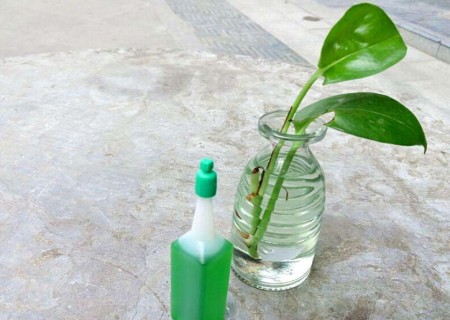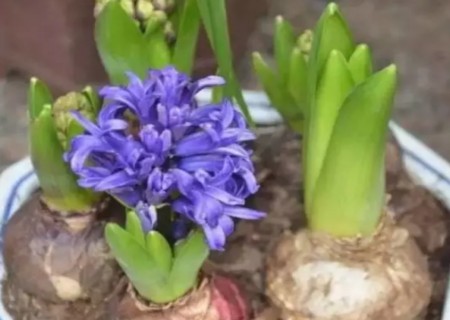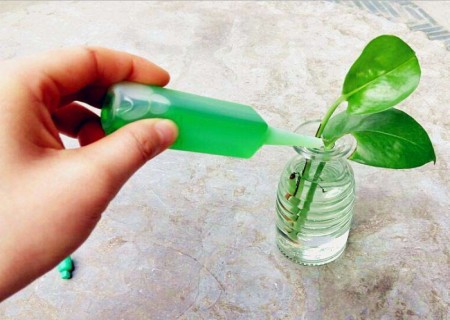Self-made hydroponic plant nutrient solution (formula and production method)
Hydroponic plants, as the name implies, are plants cultured in water. What about the nutrition of flowers and plants in water? This point has become a headache for the majority of flower friends and vegetable friends. The fertilizer efficiency of hydroponic plants is no longer ordinary fertilizer, but a beautiful fertilizer. This is about the use of nutrient solution for hydroponic plants.
Hydroponic culture is a new type of soilless culture of plants, also known as nutrient solution culture, its core is to fix the roots of plants in the planting basket and make the roots naturally hang into the plant nutrient solution, which can replace the natural soil to provide water, nutrients, oxygen, temperature and other growth factors for plants to grow normally and complete their entire life cycle. Hydroponics, the key is water.

The nutrient solution of hydroponic flowers is very critical, but it is not difficult to make your own nutrient solution. The following drunken flower network introduces you to the world's most famous hydroponic nutrient solution method:
Nutrient solution formula:
Solution A: calcium nitrate 125g, ferrous sulfate 12g. Add to 1 kg of water.
Solution B: magnesium sulfate 37g; ammonium dihydrogen phosphate 28g; potassium nitrate 41g; boric acid 0.6g; manganese sulfate 0.4g; copper sulfate 0.004g; zinc sulfate 0.004g. Add to 1 kg of water.
Preparation process of nutrient solution:
① Weigh all kinds of fertilizers separately and put them in clean containers or plastic film bags, as well as plastic film bags spread on the ground for use.
② When mixing and dissolving fertilizers, we should pay strict attention to the order, and separate Ca2 + from SO42-and PO43-, that is, calcium nitrate cannot be mixed with several fertilizers other than potassium nitrate, such as magnesium sulfate and ammonium dihydrogen phosphate, so as to avoid calcium precipitation.
(3) Dissolving order of fertilizer in tank A: dissolve ferrous sulfate in warm water first, then dissolve calcium nitrate, add water and stir until it is dissolved evenly; dissolve magnesium sulfate in tank B, then add ammonium dihydrogen phosphate and potassium nitrate in turn, add water and stir until it is completely dissolved, dissolve boric acid in warm water, and then add the rest of trace element fertilizer respectively. A, B two kinds of liquid tanks are respectively stirred after standby.
④ When using nutrient solution, first take 10 ml of mother liquor from tank A and dissolve it in 1 kg of water, and then add mother liquor from tank B to this 1 kg of water, and then use it.
A crystal clear glass, a graceful green plant, completely grown in transparent water, from the cup stretched out oily leaves, in the study, office, living room, bathroom and other places, can grow vigorously, this is a typical pot of hydroponic plants. Many people think too simple about the conservation of hydroponic plants, thinking that it is enough to buy special nutrient solution for hydroponic cultivation from the market according to the instructions. In fact, domestic hydroponic flowers have special requirements for oxygen. The nutrient solution of domesticated hydroponic flowers is in a static state, and the dissolved oxygen is low, which is not conducive to the growth of flowers. The following measures should be taken to increase the dissolution of oxygen:
1. Vibration oxygenation. Fix the flower plant with one hand and shake it gently more than 10 times with the other hand. After shaking, the dissolved oxygen content of nutrient solution can be increased by about 30%.
2. Increase the number of water changes. Water change is to change the bottle added with nutrient solution of water. Under normal circumstances, the water is changed once every 5 to 10 days in spring and autumn; once every 5 days in summer; and once every 10 to 15 days in winter. Domestic hydroponic flowers should use soft water as water source, generally can use tap water in line with national standards. After the tap water is placed for two hours to half a day, after its temperature is close to room temperature, chlorine in the water is volatilized, and then the purchased nutrient solution is added according to the proportion, it becomes the nutrient solution that can cultivate hydroponic plants.
3. Add appropriate amount of "solid oxygen" or add 1% hydrogen peroxide (3% hydrogen peroxide) to the nutrient solution.
4, the use of micro-submersible pump or oxygen pump (are aquarium standard products) for the nutrient solution waterfall, plant roots in such an environment can obtain sufficient oxygen, promote the healthy growth of flowers.
Here are some of the experiences of netizens:
Method one: buy a pack of high-efficiency flower fertilizer (one yuan) in the flower market, add water and then clarify, put it into a large bottle for later use, personally feel better than the flower nutrient solution sold in the flower market. Note oh, do not add too much in hydroponics, each time add a few drops can be. This is the flower market hawker's method, after I use it, I feel that it can completely replace the so-called flower nutrient solution.
Method 2: Use the compound fertilizer readily available at home. Every time you change the water, add 4-5 compound fertilizers to the water. The effect is good. Prepare nutrient solution with glass, enamel, ceramics and other utensils, do not use metal containers.
Also remind everyone to pay attention to hydroponic flowers:
If tap water is used when preparing nutrient solution, tap water should be treated because most tap water contains chloride and sulfide, which are harmful to plants, and a little bicarbonate will also hinder the absorption of iron by roots. Therefore, when using tap water to prepare nutrient solution, a small amount of sodium EDTA or humate compounds should be added to treat chloride and sulfide in water. If the substrate of hydroponic flower technology adopts peat, the above defects can be eliminated. If the quality of groundwater is poor, pollution-free river water or lake water can be used for preparation.
2, if you do not use nutrient solution, only use ordinary hydroponics, it is OK, but the growth will be worse and the growth will be slow. Under normal circumstances, the cultivation water in the basin should be replaced once every one or two months, with tap water, but the attention should be placed on tap water for a period of time to keep the root temperature stable.
3, hydroponic flowers are mostly suitable for indoor cultivation of negative and neutral flowers, have their own requirements for light. Negative flowers such as ferns, orchids, araceae plants, should be moderate shade; medium-sized flowers such as turtle, gooseberry, poinsettia and other light intensity requirements are not strict, usually like the sun is sufficient, in the shade can also grow normally. It is very important to ensure the normal growth temperature of flowers, flower roots grow better in the range of 15-30 degrees.
4, should pay attention to distinguish the root color of flowers to determine whether to grow a little better. Light, temperature, nutrient solution concentration appropriate for the whole root or root mouth is white. Please pay attention to strictly prohibit excessive nutrient solution, strictly prohibit shortening the time interval of adding nutrient solution.
5. During the growth of hydroponic flowers, if water droplets are found at the tip of the leaves, it is necessary to appropriately reduce the height of the water surface, expose more roots to the air, and reduce the soaking ratio in the water to facilitate the absorption of oxygen.
Time: 2019-06-10 Click:
- Prev

How to maintain and manage hyacinth after planting
Generally speaking, the flowering hyacinth only needs to wrap the hyacinth bulb in a cool and ventilated place, such as a newspaper, and then take it out and replant it around October of next year. Of course, you can also buy balls to plant. When selecting and purchasing seed heads, we should pay attention to selecting bright skin color and strong texture.
- Next

Application method of hydroponic plant nutrient solution
The growth and flowering of flowers need a lot of nutrients, so it is necessary to add nutrient solution to the aquaculture to meet the needs of plant growth and flowering. The nutrient solution can be purchased at the hydroponic flower store and purchased according to the variety of flowers to be cultivated. But when using it, it must be diluted with water in strict accordance with the proportion in the instructions.
Related
- Fuxing push coffee new agricultural production and marketing class: lack of small-scale processing plants
- Jujube rice field leisure farm deep ploughing Yilan for five years to create a space for organic food and play
- Nongyu Farm-A trial of organic papaya for brave women with advanced technology
- Four points for attention in the prevention and control of diseases and insect pests of edible fungi
- How to add nutrient solution to Edible Fungi
- Is there any good way to control edible fungus mites?
- Open Inoculation Technology of Edible Fungi
- Is there any clever way to use fertilizer for edible fungus in winter?
- What agents are used to kill the pathogens of edible fungi in the mushroom shed?
- Rapid drying of Edible Fungi

